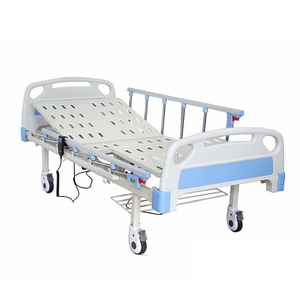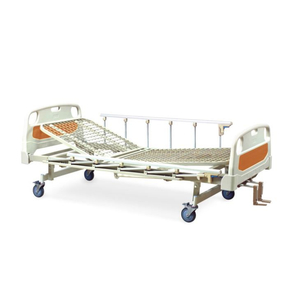Hospital beds are essential equipment in healthcare settings, providing comfort and support to patients during their recovery. Understanding the dimensions and specifications of a hospital bed is crucial for manufacturers, distributors, and healthcare providers. The question "What size is a hospital bed?" may seem simple, but it involves a complex answer that depends on various factors, including the type of bed, its intended use, and the patient population it serves.
In this research paper, we will explore the different sizes of hospital beds, their variations, and the factors influencing their dimensions. We will also discuss the importance of choosing the right size for specific healthcare needs. For those in the manufacturing and distribution sectors, understanding these details is critical for ensuring that the beds meet the requirements of hospitals, clinics, and home care environments.
Moreover, we will examine how hospital beds are categorized based on their functions and dimensions. For example, manual hospital beds, electric hospital beds, and specialized beds like bariatric beds all have different size requirements. To learn more about the different types of hospital beds, you can visit the Hospital Bed section on Topmedi's website.
Standard Hospital Bed Sizes
The size of a standard hospital bed is typically 36 inches wide and 80 inches long. This size is designed to accommodate most adult patients comfortably. The width allows for enough space for patients to move and for healthcare providers to perform necessary procedures. The length ensures that even taller patients can rest comfortably without their feet hanging off the bed.
However, hospital beds are not one-size-fits-all. Depending on the patient’s needs and the healthcare setting, the size of the bed may vary. For example, pediatric hospital beds are smaller, while bariatric beds, designed for larger patients, are wider and longer. The standard hospital bed size is a starting point, but it’s essential to consider the specific requirements of the patient population when selecting a bed.
Dimensions of Standard Hospital Beds
Here are the typical dimensions of a standard hospital bed:
These dimensions are suitable for most adult patients, but for specialized care, different sizes may be required. For example, in intensive care units (ICUs), beds may need to be longer or have additional features like side rails and adjustable headrests.
Specialized Hospital Bed Sizes
In addition to standard hospital beds, there are specialized beds designed for specific patient populations. These beds come in various sizes to meet the unique needs of patients. Below are some examples of specialized hospital beds and their dimensions.
Bariatric Hospital Beds
Bariatric beds are designed for patients who are overweight or obese. These beds are wider and longer than standard hospital beds to provide additional support and comfort. The typical dimensions of a bariatric bed are:
Width: 42 to 48 inches (107 to 122 cm)
Length: 80 to 88 inches (203 to 224 cm)
Weight capacity: Up to 1,000 pounds (454 kg)
Bariatric beds are essential in healthcare settings where patients with higher body weights require care. These beds ensure that patients are comfortable and safe during their stay in the hospital. For more information on bariatric hospital beds, visit the Hospital Bed section on Topmedi's website.
Pediatric Hospital Beds
Pediatric hospital beds are smaller than standard beds and are designed to accommodate children. These beds are typically adjustable to ensure the child’s safety and comfort. The dimensions of a pediatric hospital bed are:
Pediatric beds often come with additional safety features, such as side rails and adjustable height, to prevent falls and ensure the child’s safety. These beds are commonly used in pediatric wards and children’s hospitals.
Adjustable Hospital Beds
Adjustable hospital beds are designed to provide flexibility in patient positioning. These beds are often used in intensive care units (ICUs) and for patients with mobility issues. The dimensions of adjustable hospital beds can vary, but they typically fall within the following range:
Adjustable beds allow for changes in the bed’s height, headrest, and footrest, making it easier for healthcare providers to care for patients. These beds are also beneficial for patients who need to change positions frequently to prevent bedsores or other complications.
Factors Influencing Hospital Bed Size
Several factors influence the size of a hospital bed, including the patient population, the type of care provided, and the healthcare setting. Below are some of the key factors that determine the size of a hospital bed.
Patient Population
The size of the patient population is one of the most significant factors influencing hospital bed size. For example, pediatric patients require smaller beds, while bariatric patients need larger beds to accommodate their weight and size. Healthcare providers must consider the specific needs of their patient population when selecting hospital beds.
Type of Care
The type of care provided also plays a role in determining the size of a hospital bed. For example, ICU beds may need to be larger and more adjustable to accommodate medical equipment and allow for easier access to the patient. In contrast, beds in general wards may be smaller and less adjustable.
Healthcare Setting
The healthcare setting is another factor that influences hospital bed size. For example, home care beds are typically smaller and more compact than hospital beds to fit into a home environment. In contrast, hospital beds in acute care settings may be larger and more adjustable to accommodate the needs of critically ill patients.
In conclusion, the size of a hospital bed is not a one-size-fits-all solution. The dimensions of a hospital bed depend on various factors, including the patient population, the type of care provided, and the healthcare setting. Standard hospital beds are typically 36 inches wide and 80 inches long, but specialized beds, such as bariatric and pediatric beds, come in different sizes to meet the unique needs of patients.
For manufacturers, distributors, and healthcare providers, understanding the different sizes of hospital beds is crucial for ensuring that the beds meet the needs of patients and healthcare facilities. By selecting the right size and type of bed, healthcare providers can improve patient comfort and safety, while manufacturers and distributors can ensure that their products meet the demands of the healthcare market.
To explore more about hospital beds and their specifications, visit the Hospital Bed section on Topmedi's website. You can also learn more about the different types of hospital beds, including manual and electric beds, by visiting the Manual Hospital Bed and Electric Hospital Bed sections.





















